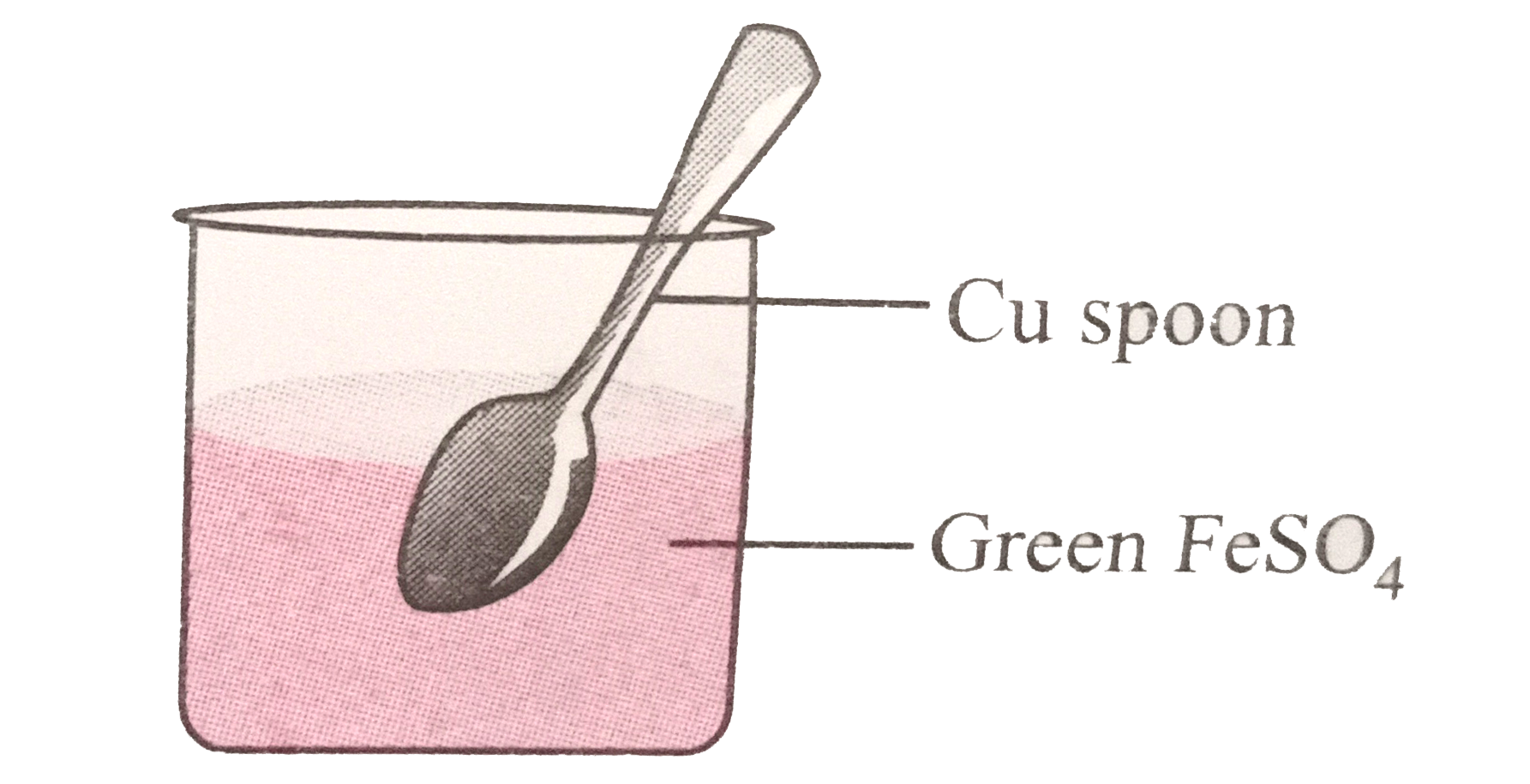Complete Solutions to Redox Reactions And Electrode Processes of chapter REDOX REACTIONS of Class 11 book with complete answers and questions
| Class 11 | CHEMISTRY |
| Chapter | REDOX REACTIONS |
| NCERT FINGERTIPS | Redox Reactions And Electrode Processes |
| Number Of Questions | 22 |
| Academic Year | 2023-24 |
Given below are few statements regarding electrode potentials. Mark the correct statements.
View SolutionWhat wil be the products of electrolysis of an aqueous solution of `AgNO_(3)` with silver electrodes ?
View SolutionWhat will be the products of electrolysis of `AgNO_(3)` solution in water with platinum electrodes ?
View SolutionIn an oxidation process for a cell,
`M_(1)rarr M_(1)^(n+)+n e^(-)`,
the other metal `(M_(2))` being univalent showing reduction takes up ...... electrons to complete redox reaction.
View SolutionWhich of the following reactions takes place at anode ?
View SolutionWhich of the following will act as cathode when connected to standard hydrogen electrode which has `E^(@)` value given as zero ?
(i) `Zn^(2+)//Zn, E^(@)=-0.76V`
(ii) `Cu^(2+)//Cu, E^(@)=+0.34 V`
(iii) `Al^(3+)//Al, E^(@)=-1.66 V`
(iv) `Hg^(2+)//Hg, E^(@)=+0.885 V`
View SolutionWhich of the following reaction does not take place ?
View Solutionनिम्नलिखित संभव अभिक्रियाओं की सहायता से `Mg,Zn,Cu` और `Ag` को उनके धत्ते हुए इलेक्ट्रोड विभव के क्रम में लिखिए ।
`Cu+2Ag^(+)toCu^(2+)+2Ah`
`Mg+Zn^(2+)toMg^(2+)+Zn`
`Zn+Cu^(2+)toZn^(2+)+Cu`
View SolutionWhich of the following is not a correct statement about electrochemical series of reduction potentials ?
View SolutionIf a spoon of copper metal is placed in a solution of `FeSO_(4)`, what will be the correct observation ?

View SolutionThe solution in a beaker turns blue if
View SolutionThe standard electrode potential a `Ag^(+)//Ag` is +0.80 V and of `Cu^(2+)//Cu` is +0.34 V. These electrodes are connected through a salt bridge and if :
View SolutionThe `E^(@)` values of redox complex of halogens are given. Based on these values mark the correct statement.
`E_(I_(2)//CI^(-))^(@)=+0.54V, E_(Br_(2)//Br^(-))^(@)=+1.08V`,
`E_(Cl_(2)//Cl^(-))^(@)=+1.36V`,
View SolutionArrange the following metals in the order in whiCHM they displace eaCHM other from the solution of their salts. `Al, Cu, Fe, Mg, ` and `Zn`.
View SolutionArrange the following metals in increasing order of their reducing power.
[ Given : `E_(K^(+)//K)^(@)=-2.93V, E_(Ag^(+)//Ag)^(@)=+0.80V, E_(Al^(3)//Al)^(@)=-1.66V, E_(Au^(3+)//Au)^(@)=+1.40 V, E_(Li^(+)//Li)^(@)=-3.05 V`]
View SolutionA metal X displaces nickel from nickel sulphate solution but does not displace manganese from manganese sulphate solution. What is the correct order of their reducing powers ?
View SolutionGiven `E_(Ag^(+)//Ag)^(@)=+0.80 V, E_(Cu^(2+)//Cu)^(@)=+0.34 V, E_(Fe^(3+)//Fe^(2+))^(@)=+0.76 V, E_(Ce^(4+)//Ce^(3+))^(@)=+1.60 V`
Which of the following statements is not correct ?
View Solutionनिम्नलिखित आयनो को इलेक्ट्रॉन ग्रहण करने की बढ़ती क्षमता के क्रम में लिखो । `H^(+),Mg^(2+),K^(+),Ag^(+),Zn^(2+)` तथा `Cu^(2+)`
View SolutionWhat will be the order of decreasing reducing nature for the given metals ?
View SolutionWhich of the following is the strongest oxidizing agent ?
View SolutionFluorine is the best oxidising agent because it has
View SolutionWhich of the following halides is most acidic ?
View Solution
Redox Reactions And Electrode Processes questions and complete solutions for chapter REDOX REACTIONS of MTG CHEMISTRY (HINGLISH) of Class 11